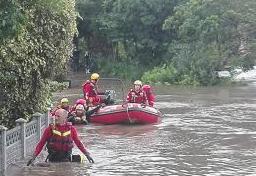What to do in a plumbing emergency

What to do in a plumbing emergency
Firstly, having a reliable 24/7 plumbing service contact is vital. Choose a company that is known for arriving timeously works quickly, charges fairly and has the latest equipment.
Assess whether the plumbing issue is truly an emergency or something you can temporarily fix yourself before calling in a regular plumbing service. For small leaks, a roll of plumber’s tape can be highly effective at sealing an area before you get it properly repaired.
Before the plumbing team gets to your house, you can follow these steps to prevent flooding in your home or further damage to your plumbing system.
Shut off relevant water points in your home. For toilets, turn off the valve at the base of the toilet that gives the cistern its water supply. However, if major flooding is occurring on your property, turn off the water mains to your home as soon as possible.
Check your water heater and turn it off in a plumbing emergency. This will limit damage to the heater by reducing the increase of heat inside it, which could lead to bursting or overheating. For homes with gas heaters, ensure you turn the gas off too.
Open your drains and spigots after you have shut off water mains in order to drain water still trapped in your pipes. To direct this water away from your home and the damaged areas, turn on taps located outside, such as those that are used as hosepipe attachments for watering the garden.

